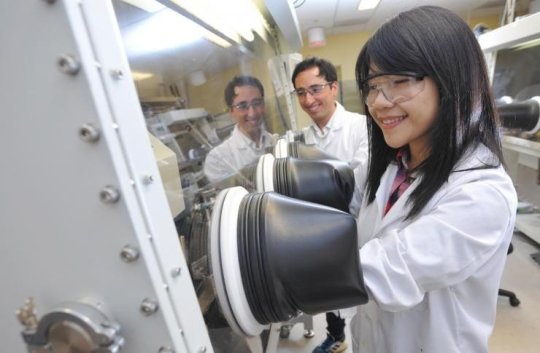Introduced by scientists at the Georgia Institute of Technology and his team from three other institutions, the method offers a novel way of inducing p-type electronic doping in organic semiconductor films. The procedure engages briefly immersing the layers in a solution at room temperature and would substitute a more intricate method that needs vacuum processing.
“Our expectation is that it would be a game changer for organic photovoltaics by further simplifying the process for structuring polymer-based solar cells,” says Bernard Kippelen, director of Georgia Technologies Centre for Organic Photonics and Electronics and a lecturer in the School of Computer Engineering and Electrical Engineering. “We consider this method is likely to impact numerous other device platforms in areas like organic printed electronics, photo detectors and sensors and light-emitting diodes.”
Sponsored by the Office of Naval Research, the work was supported in the Nature Materials. The research also involved researchers from the University of California at Santa Barbara, Kyushu University in Japan and the Eindhoven University of Technology in Netherlands.
The method comprises of immersing slim films of organic semiconductors and their blends in PMA or polyoxometalatesolutions in nitromethane for a specific time, in the order of minutes.The diffusion of the dopant molecules into the layers during immersion leads to effective p-type electronic doping over a constrained depth of 10 to 20 nanometres.The p-doped regions reveal enhanced electronic conductivity and excellent work function, reduced solubility in the processing solvent and enhanced photo-oxidation stability in air.

Figure: Graduate Students at Georgia Tech testing the performance of single layer solar cells
Such novel technique offers a simpler alternative to air-sensitive molybdenum oxide layers utilized in the most effective polymer solar cells that are usually processed utilizing costly vacuum equipment. When applied to polymer solar cells, the novel doping technique offers effective whole collection. For the very first time, singular – layer polymer solar cells were illustrated by linking this new technique with spontaneous vertical phase separation of amine – comprising polymers that results in effective electron collection at the opposing electrode.
“Our aim is to further enhance the fabrication of organic solar cells to the point at which every substance needed to fabricate them might be included in a single kit that is delivered to the public,” says Larrain. “Such solar cell product might be varying if you are able to offer people with a solution that would enable them to create their own solar cells. It could allow people to power themselves and be independent of the grid.”
Beyond the solar cells, the doping method could be more extensively utilized in other areas of organic electrical, stated Ph.D. scientist Wen-Fang Chou. “With simple method, this is really a promising technology delivering adjustable conductivity of semiconductors that could be placed to numerous organic electronics and could generate a great impact on the industry.”
Filed Under: News


Questions related to this article?
👉Ask and discuss on EDAboard.com and Electro-Tech-Online.com forums.
Tell Us What You Think!!
You must be logged in to post a comment.